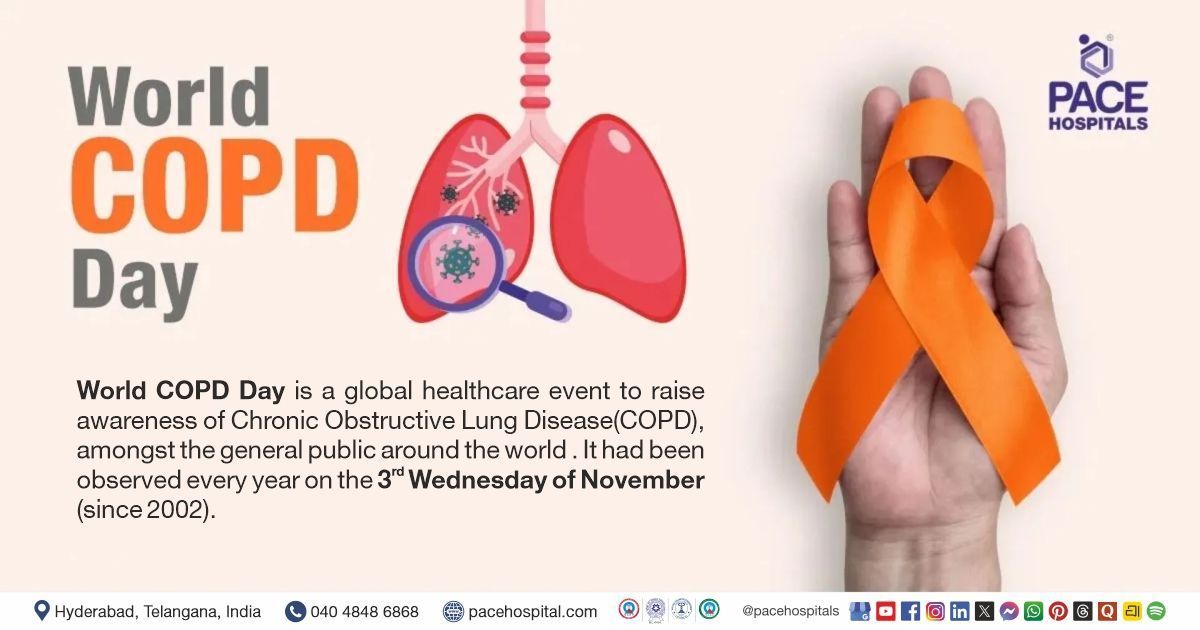Successful URSL for Kidney Stones in 55 Y.O. Male, Restoring Urine Flow
PACE Hospitals
The PACE Hospitals’ expert Urology team successfully performed a right ureteroscopic lithotripsy with DJ stenting on a 55-year-old male patient who had presented with right flank pain. The procedure was carried out to remove a renal stone, effectively relieving the patient's symptoms and supporting optimal kidney function and recovery.
Chief Complaints
A 55-year-old male patient presented to the Urology Department at
PACE Hospitals, Hitech City, Hyderabad, with persistent right flank pain lasting several days, without any associated urinary symptoms such as dysuria, haematuria, nausea, or vomiting. Due to the localized and prolonged nature of the pain, a thorough urological evaluation was undertaken to investigate a potential underlying renal condition.
Past Medical History
The patient had a known history of hypertension and coronary artery disease (CAD), for which he had previously undergone coronary angiography (CAG). His hypertension was well-controlled with medication, and his CAD was managed post-CAG with medications aimed at preventing further cardiac events.
Given his cardiovascular history, particularly his post-CAG status, he was considered at increased risk for renal complications. Although he had no history of diabetes or other comorbidities, the presence of right flank pain prompted an urological evaluation to rule out potential renal issues related to his cardiac condition.
On Examination
Upon admission, the patient was afebrile with stable vital signs, and his general condition appeared satisfactory. He was conscious, alert, and showed no signs of acute distress. Physical examination revealed mild tenderness over the right flank on deep palpation, correlating with the patient's reported symptoms. However, there was no palpable mass, and no signs of peritonism, such as guarding, rebound tenderness, or rigidity, were noted during the abdominal examination.
Based on these clinical findings, the absence of systemic or acute abdominal signs, and the localized right flank tenderness, the medical team suspected a renal or ureteric origin of the pain, likely due to an obstructive uropathy such as ureteric calculi.
Diagnosis
Based on his presenting symptoms and initial examination, there was a strong clinical suspicion of a right ureteric calculus. These findings warranted further diagnostic investigations, which confirmed the diagnosis and led to the decision to proceed with a right ureteroscopic lithotripsy and DJ stenting.
To support the diagnosis and assess the extent of the patient's condition, a series of relevant investigations were conducted.
- CT KUB (Kidney, Ureters, and Bladder): CT scan of KUB revealed a 6.5 mm calculus in the right upper ureter, causing mild dilatation of the pelvicalyceal system and upper ureter, indicating mild hydroureteronephrosis. An additional 8 mm calculus was noted in the lower pole of the right kidney. A tiny non-obstructive calculus was also seen in the upper pole of the left kidney. These findings confirmed bilateral renal calculi, with an obstructive right upper ureteric stone likely responsible for the patient's flank pain. It also revealed fatty liver changes with a lobulated outline and widened interlobar fissures, suggesting potential liver issues. Liver Function Tests (LFTs) and liver elastography were recommended for further evaluation.
- Complete Blood Count (CBC): The CBC showed normal hemoglobin levels and no neutrophilic predominance, indicating the absence of active systemic infection. This suggested that the patient’s symptoms were likely due to localized inflammation from the renal calculi, rather than a systemic infection.
- Urinalysis: The urinalysis revealed microscopic hematuria, confirming the presence of red blood cells, a common finding in renal calculi, which supported the patient’s right flank pain.
- Renal Function Tests: Electrolytes were normal, and serum creatinine was slightly elevated but within an acceptable range, indicating mild renal strain. Blood urea levels were normal, suggesting that renal function remained preserved despite the obstructing renal stone.
- Coagulation Profile: Both PT (Prothrombin time) and INR (International normalized ratio) were within normal limits, confirming normal coagulation function and minimizing bleeding risk during surgery.
- 2D Echocardiogram (ECHO): The echocardiogram showed normal left and right ventricular function, mild diastolic dysfunction, and no signs of pulmonary hypertension or clots, confirming the patient’s suitability for general anesthesia.
The above diagnostic tests indicated localized inflammation with no signs of systemic infection or significant cardiac risk, thereby confirming that the patient was suitable for safe surgical intervention.
Based on the confirmed findings, the patient was advised to undergo Kidney Stones Treatment in Hyderabad, India, under the expert care of the Urology Department, to provide effective stone clearance, alleviate his flank pain, and prevent potential complications such as obstruction, infections, or renal function impairment.
Medical Decision-Making (MDM)
Given the patient’s symptoms and the confirmed diagnosis of an 8 mm calculus in the lower pole of the right kidney and a 6.5 mm calculus in the right upper ureter, surgical intervention was deemed necessary.
After a detailed discussion with the patient and his family, Dr. Abhik Debnath, Consultant Laparoscopic Urologist, recommended Ureteroscopic Lithotripsy (URSL) with DJ stenting as the most appropriate and effective treatment option to relieve the obstruction, alleviate symptoms, and preserve renal function.
This approach was intended to restore normal urinary flow by removing the obstructing stones and preventing further kidney damage. DJ stenting was planned to maintain ureteral patency, minimize the risk of complications, and support long-term kidney function.
The patient and his family were thoroughly counselled regarding his condition, the recommended URSL with DJ stenting, its benefits, potential risks, and the necessity of surgical intervention to avoid further complications and preserve renal function.
Surgical Procedure
Following the decision, the patient was scheduled for URSL Surgery in Hyderabad at PACE Hospitals, with DJ stenting under the expert supervision of the Urology Department, ensuring optimal care and a smooth recovery process.
Before proceeding with the surgery, the medical team ensured the patient's medical stability and obtained informed consent to facilitate proper alignment and recovery. The following steps were carried out during the procedure:
Preparation and Anaesthesia: The patient was placed under general anaesthesia to ensure complete comfort and a pain-free surgical experience.
Cystoscopy and Access: A cystoscope was inserted through the urethra to visualize the bladder. The right ureteral orifice was identified, and a guidewire was carefully advanced into the right upper ureter.
Ureteroscope Insertion: A flexible ureteroscope was introduced over the guidewire into the right upper ureter to reach the site of the obstructing calculus.
Stone Identification and Laser Fragmentation: The calculus, suspected to be a soft uric acid stone, was visualized in the right upper ureter. Using a laser set at a low energy level (0.5J/8Hz), the stone was fragmented into smaller pieces to facilitate removal.
Stone Removal: The fragmented stone particles were meticulously extracted using specialized forceps, ensuring complete clearance of stone debris to minimize the risk of recurrence or complications.
DJ Stenting: A double-J (DJ) stent was placed in the ureter following stone removal to maintain ureteral patency, promote adequate urine drainage, and reduce the risk of postoperative obstruction, swelling, or urinary reflux.
The patient tolerated the procedure well and exhibited no immediate postoperative complications. The surgery was successfully completed, effectively resolving the ureteric obstruction and removing the renal calculus, thereby restoring normal urinary flow and helping preserve renal function.
Postoperative Care
After surgery, the patient was monitored closely in the surgical intensive care unit to ensure stability. He was then transferred to a private ward once his condition was stable. During his hospital stay, he received intravenous antibiotics to prevent infection, analgesics for pain relief, antiemetics to control nausea, and gastric protectants.
Wound care was performed daily, and his vital signs were regularly monitored. There were no signs of postoperative fever or bleeding. His recovery was smooth, and he remained hemodynamically stable throughout his stay.
With the resolution of fever and no signs of infection, the Foley catheter was removed, and the patient was able to pass urine normally without any difficulty. He had no complications related to the surgery.
The patient was discharged in a stable condition. He was given detailed instructions for follow-up care, including the management of the DJ stent and signs to watch for in case of any complications.
Discharge Notes
The patient demonstrated a satisfactory postoperative recovery and was discharged in a stable condition. At the time of discharge, he was provided with detailed instructions for ongoing care.
He was advised to maintain a proper diet to support healing, which included drinking plenty of fluids (3–4 liters per day), consuming citrus fruits and juices, and following a low-purine, low-salt diet. Instructions on wound care were provided to prevent infection, along with a schedule for follow-up appointments to monitor his recovery progress.
The patient was counselled on the importance of taking all prescribed medications as directed and maintaining good hygiene at the wound site. He was advised to avoid heavy lifting, forward bending, and straining during bowel movements. He was also instructed to avoid prolonged travel by bus, auto, or two-wheeler during the initial recovery period.
It was explained that the passage of small stones in the urine may occur and that mild flank or suprapubic discomfort, occasional blood in the urine, cloudy urine, or a mild burning sensation could also be expected. These symptoms were described as common and typically resolved within 7 to 10 days.
Discharge Medication
At the time of discharge, the patient was prescribed a complete course of oral antibiotics to prevent postoperative infections. Proton pump inhibitors were given to protect the stomach lining and reduce the risk of gastric irritation. For the management of pain and fever, antipyretics and analgesics were also prescribed.
In view of the renal calculi, urinary alkalizers were recommended to help dissolve the stones and minimize urinary tract irritation. Additionally, alpha-blockers were prescribed to promote relaxation of the ureter and facilitate smoother urinary flow.
To manage his chronic hypertension, which was under control with regular treatment, antihypertensive medications were continued. Given his post-coronary angiography (post-CAG) status, antiplatelet therapy was also maintained to prevent thrombotic complications. His blood pressure was monitored closely throughout hospitalization.
Emergency Care
The patient was informed to contact the Emergency ward at PACE Hospitals in case of any emergency or development of symptoms like fever, abdominal pain, swelling, bleeding, or vomiting.
Review and Follow-up
The patient was also advised to return for a follow-up visit with the Urologist in Hyderabad at PACE Hospitals after three months. This visit was scheduled for ureteroscopy (URS), cystoscopy, and DJ stent removal as part of his continued management and recovery.
URS was planned to assess and clear any remaining renal or ureteric stones, while cystoscopy was intended to evaluate the bladder and confirm proper stent placement. DJ stent removal was scheduled as the stent had fulfilled its role in maintaining urinary drainage during recovery. This follow-up visit was important for a thorough assessment of his healing, renal function, and to address any ongoing concerns.
Conclusion
This case highlights the effectiveness of Ureteroscopy Lithotripsy Surgery (URSL) in performing Renal Calculi Treatment in Hyderabad, India, enabling the successful removal of stones in the kidney, thereby facilitating normal urine flow.
CT scan: A Preferred Imaging Tool for Accurate Detection and Management of Renal Stones
CT KUB (Computed Tomography of the Kidneys, Ureters, and Bladder) is a highly sensitive imaging test crucial for diagnosing renal calculi. It provides detailed cross-sectional images that help accurately locate and measure the size, number, and density of stones, including those not visible on X-rays or ultrasound. Unlike other tests, CT KUB doesn’t require contrast and delivers comprehensive results quickly. It is particularly effective in detecting deeper, more complex stones, including those in the ureters or renal pelvis.
This scan enables a urologist/urology doctor to plan the most appropriate treatment, whether it's medical management, lithotripsy, or surgery. Additionally, it helps monitor the progress of stone passage and detect any complications, supporting better long-term management and decision-making.
Share on
Request an appointment
Fill in the appointment form or call us instantly to book a confirmed appointment with our super specialist at 04048486868











